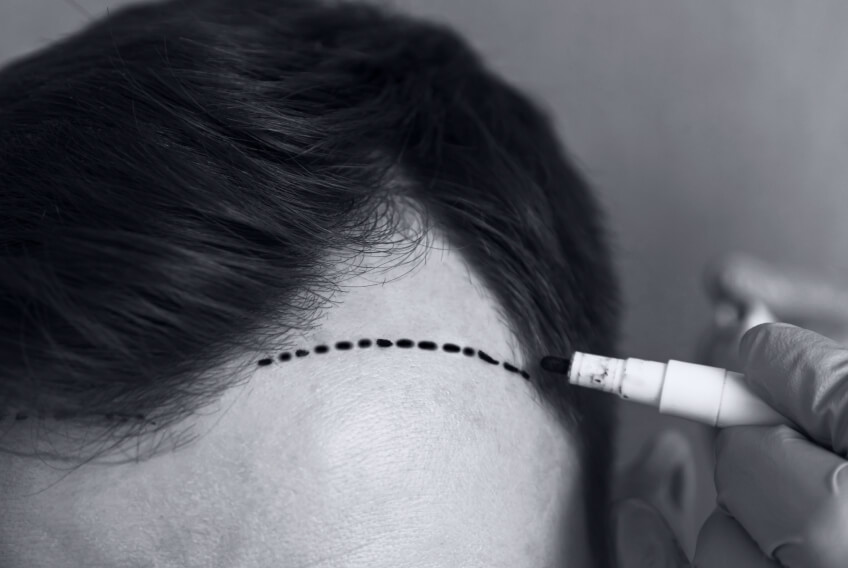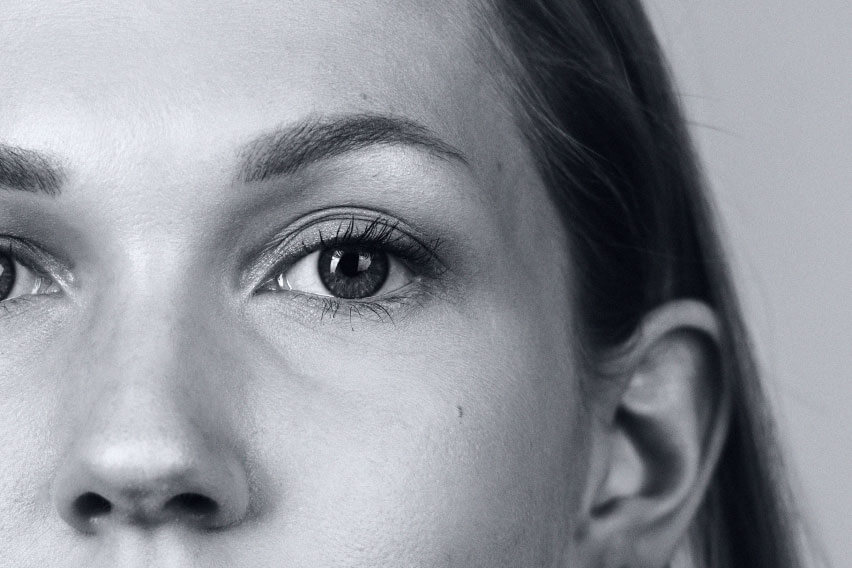
Elektrolyse


Electrolysis hair removal
Table of contents:
Introduction
For many women, regardless of their gender identity, having facial hair can be very stigmatizing and embarrassing. It can lead to feelings of shame and insecurity and can even lead to social isolation and discrimination. For example, having facial hair can lead to unwanted attention or comments from others, making (trans) women feel uncomfortable and unsafe in their own bodies.
For trans women, having facial hair can be even more fraught. If they want to live full-time as women, facial hair can be a huge obstacle in their transition. It can be difficult to hide a beard and can keep them from feeling fully female. Therefore, having body and facial hair removed can be crucial for trans women who want to express and accept their gender identity.
Fortunately, there are several options available today for permanent facial and body hair removal. One of the most reliable methods is electrolysis. This procedure uses a needle/probe that is inserted into the hair follicle and then delivers a current of electricity to destroy the hair root. Although it can be a lengthy process, electrolysis offers permanent results and can be used on virtually any type of hair and skin.
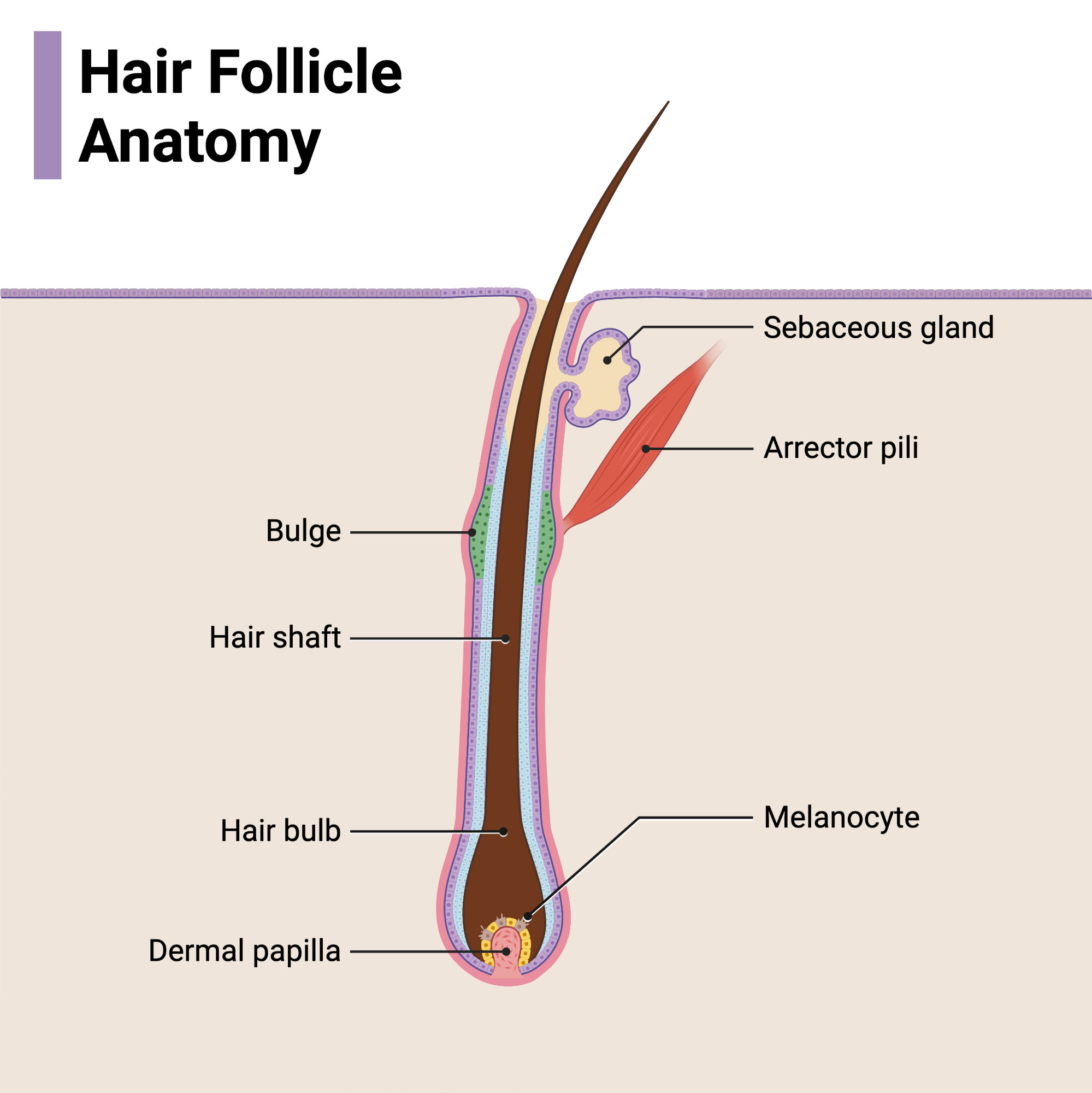
For electrolysis to be effective only one thing has to be done: killing the stem cells responsible for hair growth. These are located in an area called the Bulge in the upper part of the follicle.
In general, it is important to remember that each person is different and that the choice of hair removal method depends on individual needs and preferences. For women, especially trans women, having facial hair removed can be an essential step in their journey toward self-acceptance and gender expression. It is a way to feel more comfortable and confident in their own bodies and to express themselves as they truly feel.
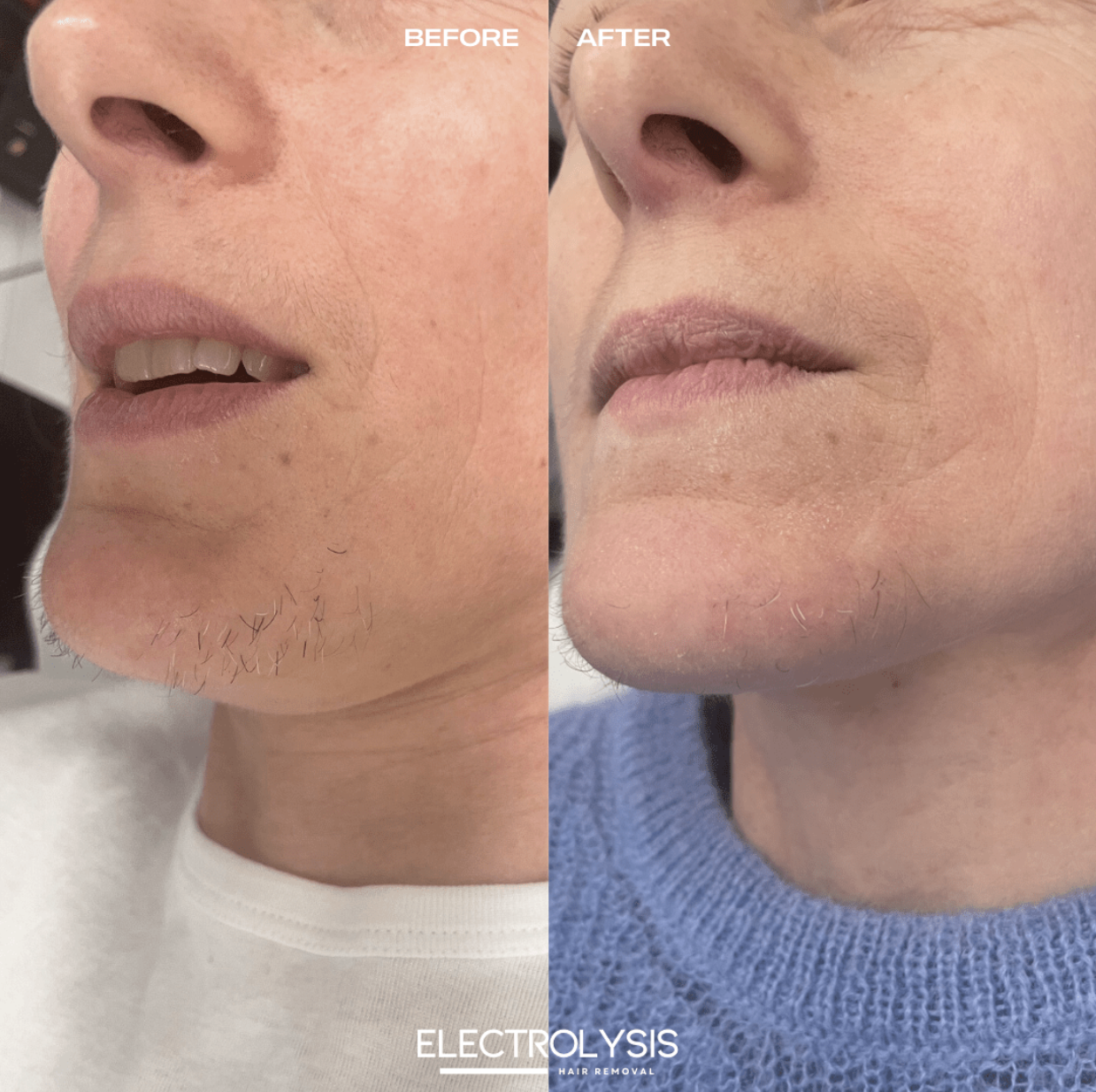
How many electrolysis treatments do I need?
It is important to understand that our hair goes through a cycle of growth, transition and rest known as the hair growth cycle. This cycle consists of three distinct phases: the anagen, catagen and telogen phases. To explain these phases:
- Anagen phase: This is the phase when the hair is actively growing, and the follicle is fully developed. This phase can range from a few months to several years, depending on the location of the hair and genetic factors.
- Catagen phase: This is the transitional phase when hair growth stops, and the hair follicle begins to shrink. This phase usually lasts several weeks.
- Telogen phase: This is the resting phase where the hair has completely stopped growing and the hair follicle is inactive. After several weeks, the hair will fall out and the cycle begins again with the anagen phase.
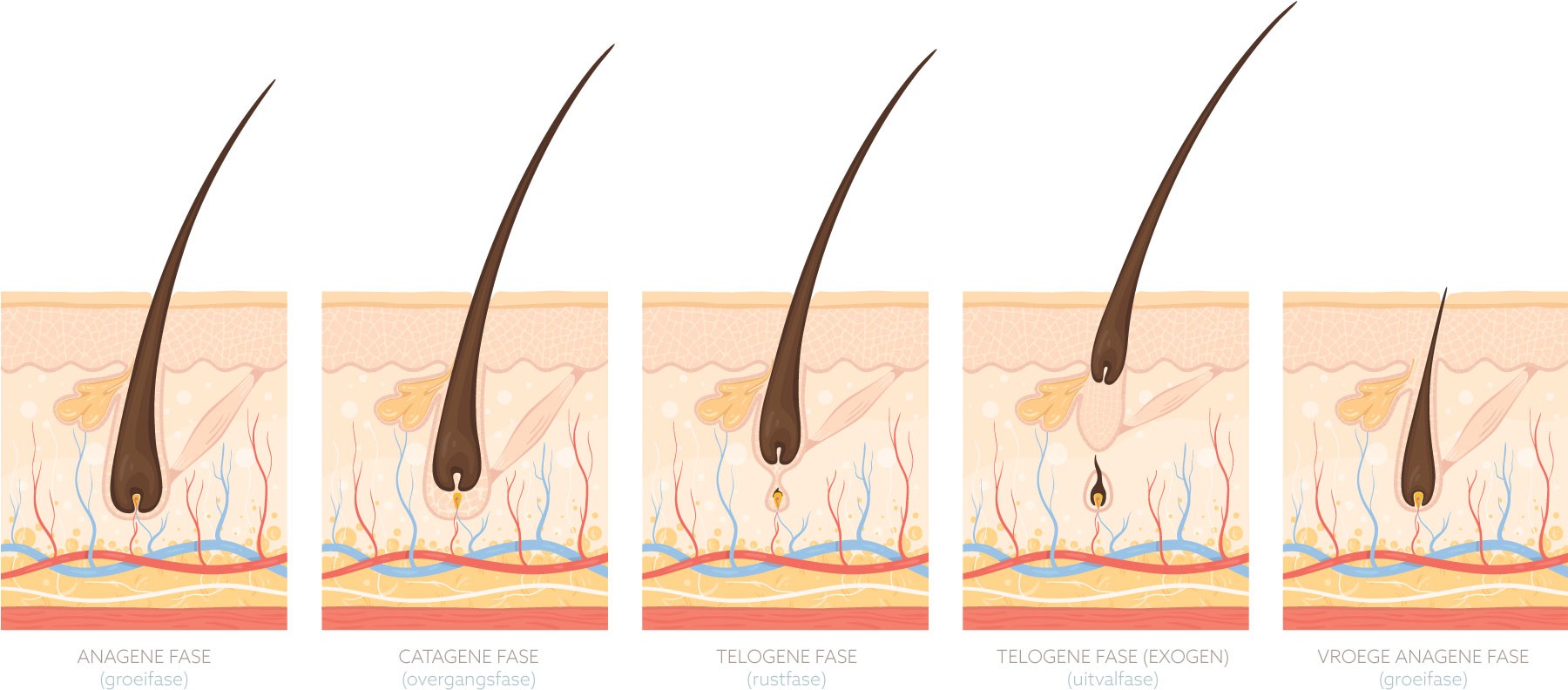
Anagen phase, catagen phase en telogen phase
During electrolysis treatment, only the hair that is in the anagen phase can be effectively treated and permanently removed. This is because only in this phase is the hair follicle fully developed and the electric current can effectively destroy the hair root. Hairs that are in the catagen or telogen phase are not fully developed and cannot be treated effectively.
Since only part of the hair is in the anagen phase at any given time, multiple electrolysis treatments are required to treat all hair follicles in the anagen phase. The number of treatments needed may vary depending on individual needs and the location of the hair, but on average, about 8-12 treatments are needed to remove all the hair in each area.
In short, multiple treatments are necessary with electrolysis because not all hairs are in the anagen phase at the same time and only hairs in this phase can be effectively treated and permanently removed. It is important to consult a professional and experienced electrolysis specialist to create an individual treatment plan that meets your specific needs.
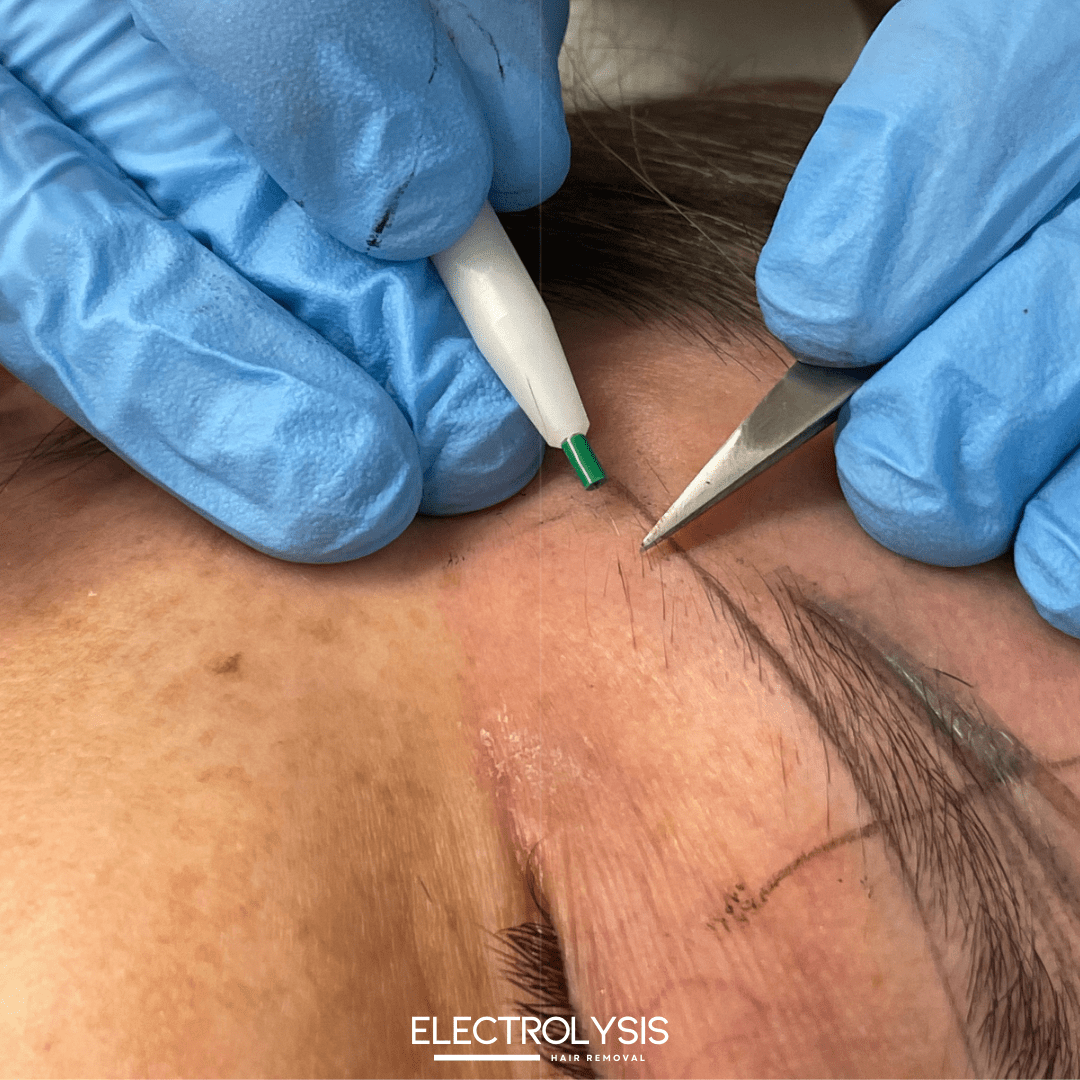
The risks
In general, there are no permanent side effects associated with electrolysis hair removal. The risk of electrolysis hair removal includes epidermal damage and damage to epidermal melanin. Epidermal injury can lead to scarring, and damage to epidermal melanin can result in hypopigmentation. If the damage to the underlying tissue is significant, pitting may also occur.
Finding an electrologist with extensive experience is key to minimizing the risk of side effects.
Am I a good candidate for electrolysis hair removal?
Looking for a permanent solution to unwanted hair? Whether it’s facial hair, bikini line, or any other body area – electrolysis is the gold standard for permanent hair removal and is suitable for almost everyone.
Unlike laser hair removal, which works best on dark hair and lighter skin, electrolysis is effective on all skin types and all hair colors. The technique targets each hair follicle individually, destroying it completely so it can never grow back.
Electrolysis works for:
All skin types – from very fair to very dark skin
All hair colors – including blonde, red, gray, and fine vellus hair
Any area of the body – face, underarms, legs, arms, bikini line, back, and sensitive zones
Small or large areas – from just a few stray hairs to full treatment zones
Electrolysis is often chosen by people who:
Have unwanted hair that doesn’t respond to laser hair removal
Experience excess hair growth due to hormonal changes
Want a completely smooth result with no regrowth or stubble
When is electrolysis not recommended?
In most cases, electrolysis is safe and effective. However, it’s best to postpone treatment if you have active skin infections, open wounds, or inflammation in the treatment area. If you have certain medical conditions or a pacemaker, we recommend consulting your doctor first.
How long should I wait between sessions?
You can choose between a quick course of 4 weeks between sessions (but this will involve fewer hairs treated per session). Our electrologists recommend a course with 6 weeks between each treatment for the best balance of overall time and cost efficiency.
Team
At Face2Face Clinic, electrolysis treatments are performed by 2 talented beauticians who are passionate about their jobs.

How many electrolysis treatments do I need?
It is important to understand that our hair goes through a cycle of growth, transition and rest known as the hair growth cycle. This cycle consists of three distinct phases: the anagen, catagen and telogen phases. To explain these phases:
- Anagen phase: This is the phase when the hair is actively growing, and the follicle is fully developed. This phase can range from a few months to several years, depending on the location of the hair and genetic factors.
- Catagen phase: This is the transitional phase when hair growth stops, and the hair follicle begins to shrink. This phase usually lasts several weeks.
- Telogen phase: This is the resting phase where the hair has completely stopped growing and the hair follicle is inactive. After several weeks, the hair will fall out and the cycle begins again with the anagen phase.
During electrolysis treatment, only the hair that is in the anagen phase can be effectively treated and permanently removed. This is because only in this phase is the hair follicle fully developed and the electric current can effectively destroy the hair root. Hairs that are in the catagen or telogen phase are not fully developed and cannot be treated effectively.
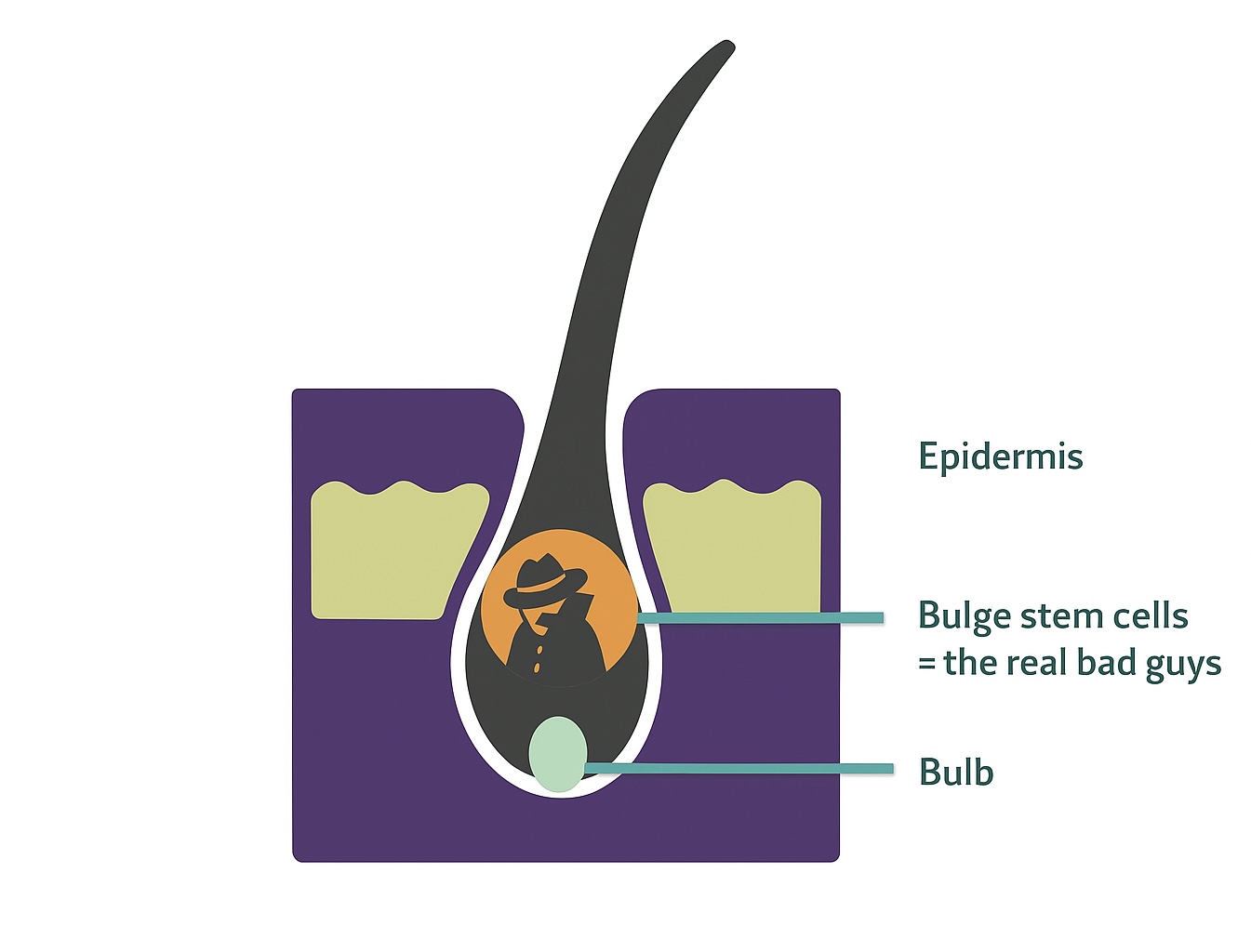
Since only part of the hair is in the anagen phase at any given time, multiple electrolysis treatments are required to treat all hair follicles in the anagen phase. The number of treatments needed may vary depending on individual needs and the location of the hair, but on average, about 8-12 treatments are needed to remove all the hair in each area.
In short, multiple treatments are necessary with electrolysis because not all hairs are in the anagen phase at the same time and only hairs in this phase can be effectively treated and permanently removed. It is important to consult a professional and experienced electrolysis specialist to create an individual treatment plan that meets your specific needs.
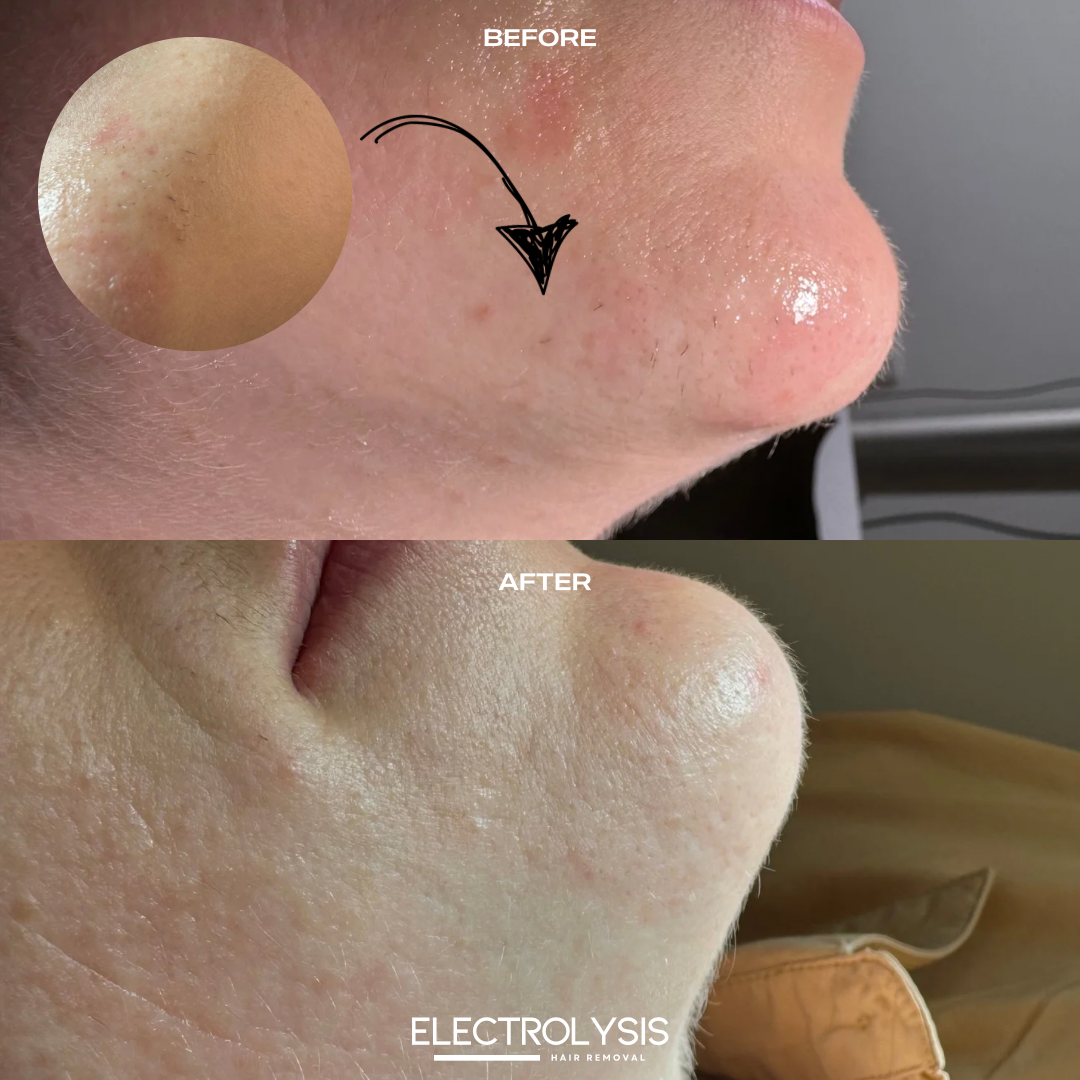 Result after 1 electrolysis treatment
Result after 1 electrolysis treatment
Intensive program
At Face2Face Clinic, we have developed an intensive program for the removal of facial and body hair. Our program is designed to speed up the process and ensure that our patients achieve the desired results as quickly as possible. We understand how important it is for trans women to feel comfortable and confident in their own bodies. During the lunch break, we provide a meal and provide hot and cold beverages to ensure your comfort and well-being.
Preparation and aftercare
Proper preparation for your electrolysis hair removal session is essential for achieving the best possible results and a smooth recovery. Following these guidelines will maximize treatment effectiveness, protect your skin, and ensure steady progress toward permanent hair removal.
Before Your First Session
Avoid tweezing, waxing, sugaring, or depilatory creams for at least three months before your first appointment. These methods remove the hair follicle, which is necessary for electrolysis to work effectively.
Stop shaving in advance so the hair is long enough for treatment:
Face: stop shaving at least 4 days before your appointment
Genital area: stop shaving at least 7 days before your appointment
Aftercare is just as important as preparation. Your skin will be temporarily more sensitive after treatment and needs time to heal. Following the recommendations below will speed up recovery and help you avoid complications.
Immediately After Treatment
Apply the recommended aftercare cream to soothe the skin and support healing.
Avoid wearing makeup on the treated area for at least 48 hours to reduce the risk of infection or breakouts.
Avoid anything that could irritate the skin in the first 48 hours, such as exfoliating scrubs or fragranced lotions.
Refrain from activities that increase blood flow for the first 48 hours, including exercise, sauna use, hot baths, tanning beds, jacuzzis, and steam rooms.
If the face has been treated, use cold compresses to reduce swelling and promote healing.
Behind the scenes
Watch our electrolysis video at the link below.
Contact us
Our patient coordinator, Joa Christiaenssen, is ready to answer your questions and provide you with the necessary information. Whether it's scheduling a consultation, discussing treatment options, arranging administrative matters, or planning a surgery, Joa is here to assist you.
We strive to offer you the best possible care and service, and we look forward to supporting you on your journey towards positive change.
Contact form
Discover our
combined
treatments
Did you know you can combine your Facial Feminization Surgery with a breast augmentation? Contact us for more information!
Dr. O. Beckers performed my Facial Feminization Surgery (FFS), and I am very happy with the result. Besides the excellent workmanship, I also want to emphasize the accessibility of Dr. Beckers and his team.
Ursula WoutersFacial Feminization Surgery



